The Role of HR in a Continuous Improvement Organization: Job Rotation
(Reposted by permission of the author from LinkedIn)
We have all heard about job rotation as a strategy but other than flexibility, what is the essence of this process? For most organizations, it is the ultimate defense against the ill effects of absenteeism or lack of availability of an individual. After all, we all want to have the best person operating our processes and they are the ones who are usually not absent.
If we shift our gears in our thought process, admit that flexibility is good and perhaps we can have someone ready to do each of our processes, then for most this takes care of the absence problem. However, I submit that this is one of the least important aspects of job rotation. It covers us in the short-term, but we are left with a myriad of problems in our work world that go untreated and perhaps can serve a greater cause than just absenteeism.
For me, the larger problem is how to create flexibility for the long term. The desired state is to have a workforce that is able and willing to take on any challenge that may come our way. We find ourselves in a very different state of work that requires us to change not only jobs, open because of absence, but to adapt to changing customer expectations, needs to reduce cost and even change our product offerings resulting in work not now done. In short, we must be flexible and open to learning to succeed. We must be able to change processes, equipment and work demands often and quickly. The major issue is how do you accomplish them.
Job rotation is a means to these ends, but it is not the target. The objective is to get all skills and process to be able to change quickly, efficiently and with as little waste generated as possible. This is a requirement for all team members to be ready and willing to change on very short notice. Additionally, all the support organizations must be able to provide whatever is needed to resolve issues along the way.
To accomplish this, a few important principles must be in place. First, the workforce must be capable to learning new skills with little resistance and a spirit of taking uneven process and smoothing them out. Unevenness is a condition that indicates that waste is present. Secondly, for those who support attaining evenness in the process, their knowledge of the process must precede the value adders. The third principle is that in order to support the process, the knowledge of the requirement must be anticipated and practiced. Lastly, all member must be flexible and open to learning and working together to accomplish the goals.
Knowing the situation of change is going to be an absolute requirement; the organization must be prepared. Let me add that change is a steady state but cannot be enacted instantaneously. This sets the requirement of being in front of change and not called upon to enact with no notice. In short, you can anticipate and maybe even predict but neither of these will be accomplished with 100% certainty. The objective becomes reacting as quickly as possible without generating more waste.
It is important to remember that the primary role of the manager is to study the future and create a way forward to protect those who are affected. As Robert Greenleaf (servant leadership guru) stated, the cruelest thing to do to your followers is to not anticipate the future. Most of the future is a logical extension of the present and these are the easiest to predict. It is the inauguration of creative technology that is the most disruptive. It is the changes that impact work practices, behavior, organizational structure and mindset that create the greatest challenge.
Now, back to our workplace that is producing and satisfying the customers. We must prepare them for the changes both iterative and disruptive to be able to adapt to them. If we look at the workplace as being able to change, preparation is essential. This involves clarity in communication, engaging as many as possible to support the change and set in place a process for resolving issues.
What do we do in anticipation of changes to be preventative of issues? First, we select people who have the behavior that makes change a natural part of their lives. We must bring them into an organization that values change. We must keep them flexible and we must support the difficult learnings. We then put in place mechanisms for dealing with issues that arise out of the implementation. Both of these are critical to alleviating the fear of change and being powerless. As we have said many times about problem solving, if we find that our solutions are not effective, there is a way to identify them and make corrective action. This is acceptable because we have change-readied our organization by making continuous improvement an integral part of their daily work.
In selection, we must be able to view their behavior when confronted with change and their reaction and action to the situation. We must understand if their reactions are systematic or random. We must see how they bring others into their response. We must see if confronted with constraints how they react within them. We must see if they are helpful to others who are going through the disruption. We must see if they are capable of reflecting on all that precedes and can articulate additional actions that need to be taken.
Once selected, we must see how they assimilate into the culture of the organization by challenging them to find waste and determine a way forward. We must see how they interact with others who were selected to begin to learn the new culture with all its challenges.
Once into their organizations and new roles, we must see how they embrace the concept of the standard for an extended period without being able to change it. Once having achieved reliability of their process, we must see how they will react to changing processes, through job rotation and go through the achieving reliability once again.
Every year, all employees are challenged with how to change the organization through improvement goals. Each member, as part of a team, must present to their supervisor a plan for achieving the goals assigned to the unit. In addition, when the volume of the product changes the team of process owners must establish new standard processes to accommodate the new rate of production. When you combine these, the number of processes is usually reduced and the team must plan how the excess individuals will be used to enhance the continuous improvement process, build new process for new products and coordinate support for their team to accomplish their new goals. The assignment to do these things must be rotated and the new processes must be learned by all.
The end product of the changes is that the employee must remain open to learning new ways and processes and maintain their support of the team. In addition, all jobs must be rotated multiple times per day to minimize the number of repeated motion injuries. All of this in an expectation of at least one improvement per month per employee.
You can see that job rotation is an important part of all these changes and the process for supporting this is a continuing requirement. Every team has a team leader. They are assigned to monitor and support the resolution of problems when identified in the process through the pulling of an andon cord. They must know all the processes and they must be able to perform job instruction training which is a standard process for making sure anyone expected to perform a new job is well prepared to accomplish that job with the highest quality in the synchronized time. The team leader is also expected to know how to ask for and guide support to resolve the issue. While waiting for the support help, the team leader must be able to find and put into action a temporary countermeasure so the line can continue to run on the process time. Finally, they are required to document the situation and begin to do the problem solving. The team leader is a selected position that must complete training for at least 48 hours prior to being selected.
There are a multitude of ways to build in flexibility and job rotation is just one of them. The form it takes is enacted throughout the organization providing employees with training and people to support them. This creates a requirement for all employees to be flexible and capable of learning new innovations.
For salaried personnel the job rotation happens on a less frequent basis but is none the less important. It is common practice for all salaried personnel to expect to be move into a new job to support their learning to apply common practices such as problem solving in new application. The aim of this is to teach all those who rotate to rely on their basic teachings and apply critical thinking to all situations. One method of critical thinking is taught to everyone so no matter where rotated, they have a common language to talk about deviations. Additionally, for managers, they are taught their role to be common no matter where they reside, and all roles solve problems using the same process.
The lessons here are simple: Support change, use common methods and make sure everyone is involved in changing. Remember that having a safe change is critical to those who are not leaders. Combine this with the use of standard work and you have a learning organization. One that uses job rotation to fulfill its objectives.
HR is the planning and execution control mechanism for job rotation. HR provides the training and coaching to assure the changes go smoothly. HR is the organization that creates plans for each and every salaried job rotation. All of this is incorporated into the development for the individuals who are being shaped to be flexible and open to learning. This enhances how the in change is integrated into their leadership and development of others.

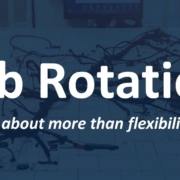 2019, Total Systems Development, Inc.
2019, Total Systems Development, Inc.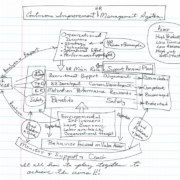 2019 Total Systems Development
2019 Total Systems Development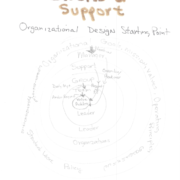 2019, Total Systems Development, Inc.
2019, Total Systems Development, Inc. 2019, Total Systems Development, Inc.
2019, Total Systems Development, Inc.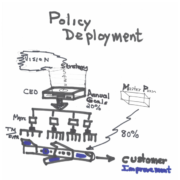 2019, Total Systems Development, Inc.
2019, Total Systems Development, Inc. 2019, Total Systems Development, Inc.
2019, Total Systems Development, Inc.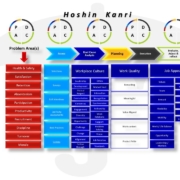 Total Systems Development, 2019
Total Systems Development, 2019 2019, Total Systems Development, Inc.
2019, Total Systems Development, Inc. 2019, Total Systems Development, Inc.
2019, Total Systems Development, Inc.